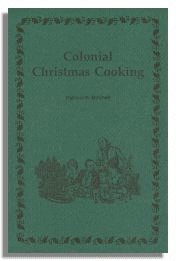
The Single Brothers House at 600 South Main Street was first built as a half-timbered structure in 1769. A brick enlargement was completed in 1786. Here Moravian boys came from home at age 14 to begin preparation for their life's work, entering into crafts or scholastic training.
The site of the 1766 Moravian settlement of Salem, North Carolina, is the location of Salem College, Home Moravian Church, and the non-profit preservation association Old Salem, Inc.. Centered around Salem Square, along Main Street in the present-day city of Winston-Salem, the area is a treasure of historic buildings and interpretation.
Moravian foodways occupy a significant place in both museum activities and present-day practice at Old Salem. Among the farming and gardening commemorations are:
Restored kitchens include those in the Single Brothers House, the 1771 Miksch House at 532 South Main Street, and the 1784 tavern.

Within the Single Brothers House is the tinshop. Here an interpreter demonstrates the construction of tin household items, many of which were utilized in home kitchens (1984 photo).

The tinsmith's tools and products are on display (1984 photo).

In the saal (vespers hall) of the Single Brothers House, an interpreter shows the author's daughter Sarah the pump handle on the 1797-98 David Tannenberg pipe organ (1984 photo).

The log-bodied Single Brothers Workshop on Academy Street, behind the Single Brothers House, was built in 1771 to house a number of trades. The current building is a reconstruction.

A horse with cart (bearing a driver and Old Salem visitors) travels along Main Street at the 1803 Market-Fire House on Salem Square.
Salem Square was laid out in 1768, and modeled after the Moravian towns of Niesky and Gnadenberg in Germany. This 1955 reconstruction of the 1803 Market-Fire House is home to two ancient fire engines which began their service in 1784 after a fire destroyed the original Salem Tavern. The building also originally served as a weekly meat market.

Old Salem's T. Bagge: Merchant shop is located in this 1775 structure, in which Traugott Bagge operated a store for the town of Salem. Its 626 South Main Street location faces the Square, and offers Old Salem craft items, museum reproductions, prints, toys, and garden accessories. (See further information from Old Salem regarding merchandise and shopping hours at T. Bagge: Merchant.)
The building is constructed of stone rubble walls, plastered and rusticated to simulate cut stone. Barrels in front are reminders of the containers used for transport and storage in T. Bagge's early days as the only mercantile establishment in Salem.

Here is seen a private 1970 reconstruction of the house merchant Traugott Bagge built on this spot in 1787 for his assistant, George Biwighausen. The plastered walls are similar in appearance to Bagge's store building, diagonally across the intersection (see immediately above).

Salem began as a Moravian settlement in 1766. The Moravian Church of today sponsors this Moravian Book and Gift Shop in the former Elias Volger House, ca. 1867, at 612-614 South Main Street, on Salem Square. The shop's dual mission is to share the faith of the Moravian Church, and for the financial benefit of agencies and individuals serving the needy. The store features Moravian Stars, Moravian Candles, Moravian Cookies, handmade items and other collectibles, American primitives and handmade tin ware, and Christmas items.

Winkler's Bakery, 529 South Main Street, was built in 1800 for baker Thomas Butner. Christian Winkler took over the establishment in 1808, and the bakery continued in the Winkler family until 1927.

The sales counter at Winkler's Bakery, manned by a costumed interpreter, is busy. Today Old Salem operates the bakery as a commercial establishment and as an interpretation of 18th- and early 19th-century baking processes.

Bakery products cool on racks at Winkler's Bakery. Specialties include traditional European-style breads, both white and dark. Moravian sugar cake and sugar cookies are also very popular.

Glazed Moravian cakes beside an antique scale provide a “balanced diet,” Salem-style!

Sunshine streams in a south window at Winkler's Bakery, allowing cooling cakes to tempt with their appearance as well as their tantalizing aroma.
Available at museums throughout the United States, or directly from the publisher.



At the Table in Colonial America

Copyright © 1984–2006 Patricia B. Mitchell.